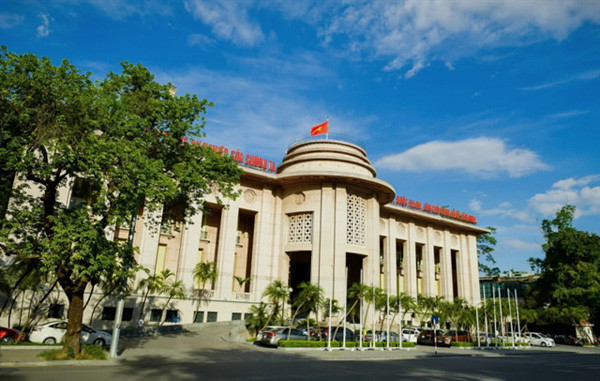
According to experts, the move is aimed to make the holding of the domestic currency more attractive than the US dollar and minimise adverse impacts of the dollar strengthening when the US Federal Reserve (Fed) continues to raise the rate next month.
The SBV last week net withdrew more than VND20 trillion from the interbank market through the issue of nearly 107,000 bills, including 91-day-term ones.
In the open market operation (OMO) channel, the SBV also withdrew nearly VND8.18 trillion last week.
The SBV’s tightening moves took place in the context that dong interest rates in the interbank market have continuously decreased for the past two weeks, when the liquidity of the banking system has been much more abundant than that in the previous time.
Data from the SBV showed the average interest rate of overnight interbank loans, which account for 90-95 per cent of the total transaction volume, on February 15, 2023 fell to 3.64 per cent per year, the lowest level since the end of 2022.
Compared to mid-January 2023, the interbank overnight interest rate decreased by 2.8 percentage points. This interest rate only started to increase again to 4.71 per cent on February 16, 2023, after the SBV issued 91-day bills to withdraw the cash out of the banking system.
For one- and two-week terms, interbank rates also continued to decrease significantly compared to mid-January 2023 to 4.87 per cent and 5.34 per cent, respectively. The rates for other terms also recorded the same trend but the decrease was not much.
With the decrease in the past two weeks, the gap between the dong and the US dollar interest rate in the interbank market has narrowed rapidly, especially for short terms. According to experts, the modest gap has affected the USD/VND exchange rate, which caused the SBV to withdraw money to maintain a larger interest rate gap.
The greenback has continuously strengthened against the dong in both official and unofficial markets in recent days.
By the end of last week, the dollar increased by VND120-150 against the dong, recording the strongest increase in more than one month and returning to the high price range of two months ago.
Vietcombank listed the dollar price at VND23,610 and VND23,980 for buying and selling, up VND110 for buying and VND140 for selling compared to the previous session. Similarly, BIDV also adjusted up the greenback by VND105 to VND23,675 for buying and VND23,975 for selling.
The selling price of the greenback in the form of cash transactions at some commercial banks in the last week’s session even exceeded the threshold of VND24,000. Specifically, ACB listed the dollar at VND23,400 for buying and VND24,000 for selling while the rate at Sacombank was VND23,645 for buying and VND24,035 for selling, up about VND100-120 against the previous day.
With the rise, the dollar price at banks in the past week increased by about VND250, or more than 1 per cent, against the previous week.
In the unofficial market, the dollar price is currently traded around VND23,650-VND23,700, an increase of about VND70 compared to the end of last week.
The central exchange rate of the dong against the dollar announced by the SBV also recorded a series of ten consecutive increases to end last week at VND23,639 per dollar.
Analysts believed the continuing trend of increasing interest rates globally will make it difficult for the SBV to keep liquidity of the banking system abundant, and interbank interest rates cannot fall deeply.
According to Vietcombank Securities Company, one of the SBV’s important targets in the monetary policy management in 2023 is to ensure the attractiveness of holding the dong to limit the capital to outflow Vietnam when dollar deposit interest rate is kept stable at zero per cent.
Therefore, assuming that the Fed’s interest rate in 2023 will be around 5 per cent as planned, VCBS believes to ensure macroeconomic balance, the domestic interbank interest rate will be much higher than that last year, averaging at around 7 per cent for one to three month terms. The rate for short-term loans may be lower in the condition that investment capital flows have more favourable movements than expected.
Source: Vietnam News